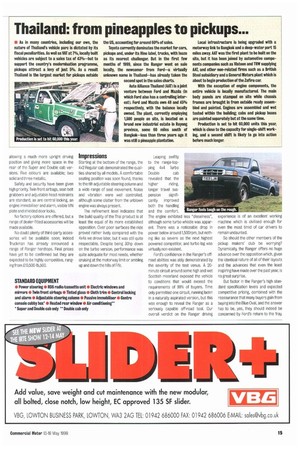Thailand: from pineapples to pickups...
Page 17

If you've noticed an error in this article please click here to report it so we can fix it.
II As in many countries, including our own, the nature of Thailand's vehicle pare is dictated by its fiscal peculiarities. As well as VAT at 7%, locally built vehicles are subject to a sales tax of 43%—but to support the country's modernisation programme, pickups attract a levy of just 5%. As a result Thailand is the largest market for pickups outside
the US, accounting for around 60% of sales.
Toyota currently dominates the market for cars, pickups and, under its Hino label, trucks, with isuzu as its nearest challenger. But in the first few months of 1999, since the Ranger went on sale locally, the newcomer from Ford—a virtually unknown name in Thailand—has already taken the second spot in the sales charts.
Auto Alliance Thailand (MT) is a joint venture between Ford and Mazda (in which Ford also has a controlling interest). Ford and Mazda own 48 and 45% respectively, with the balance locally owned. The plant, currently employing 1,500 people on site, is located on a brand new industrial estate in Rayong province, some 60 miles south of Bangkok—less than three years ago it was still a pineapple plantation. Local infrastructure is being upgraded with a motorway link to Bangkok and a deep-water port 15 miles away. AM was the first plant to be built on the site, but it has been joined by automotive components companies such as Visteon and TRW supplying MT, and other non-related firms such as a British Steel subsidiary and a General Motors plant which is about to begin production of the Zafira car.
With the exception of engine components, the entire vehicle is locally manufactured. The main body panels are stamped on site while chassis frames are brought in from outside ready assembled and painted. Engines are assembled and wet tested within the building; cabs and pickup boxes are painted separately but at the same time.
Production Is set to hit 60,000 units this year, which is close to the capacity for single-shift working, and a second shift is likely to go into action before much longer.
















































































































